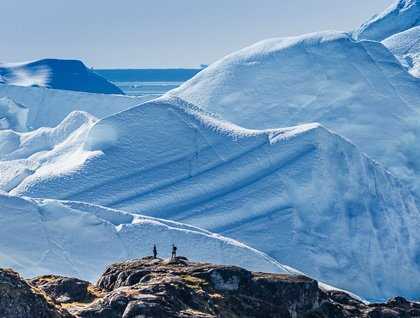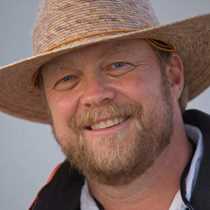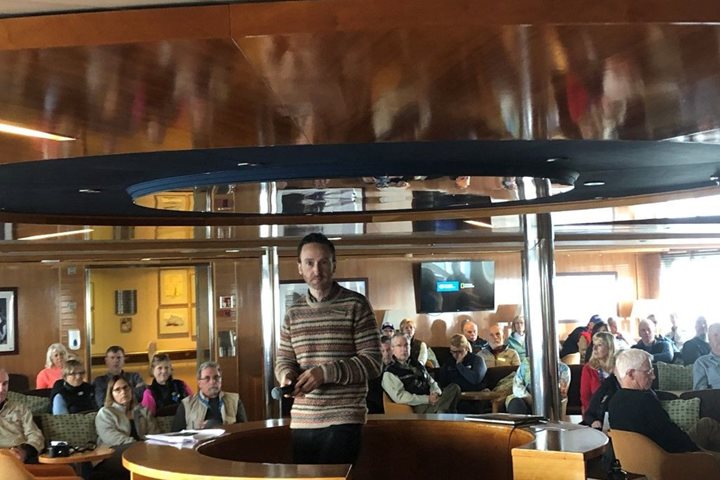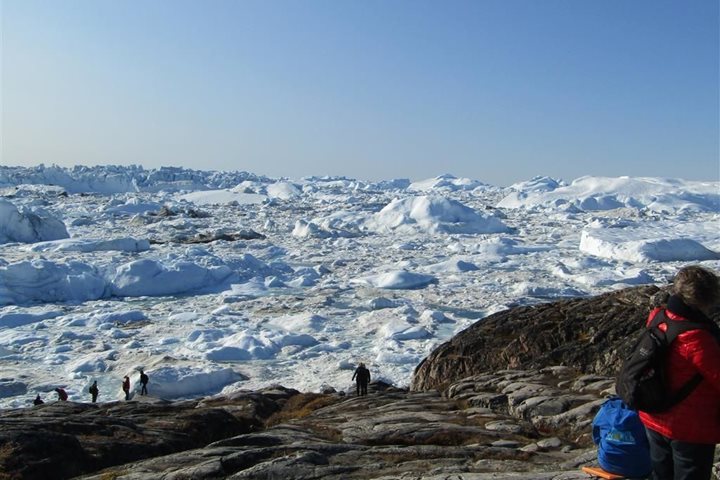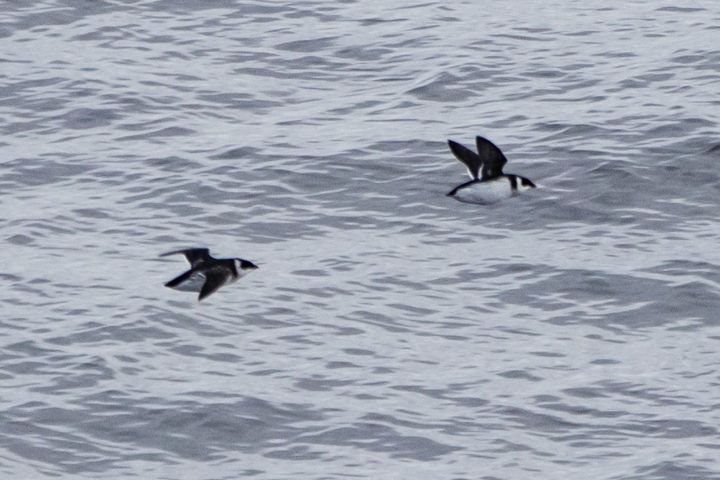The word of the day is ice. In the High Arctic, ice defines the landscape. Ice determines where we go, where the ship can navigate, and where the wildlife is found. More than 80% of Greenland is covered by ice, a vast ice sheet that inundates the landscape and, in places, is almost two miles thick. You have to go all the way to Antarctica to find more ice than Greenland.
Sunrise came early this morning as National Geographic Explorer entered Disco Bay on our way to Illuissat. It was 3 a.m. when pink light bathed painted the icebergs against a crisp blue sky. It was surprisingly warm on deck as we cruised the iceberg alley before anchoring offshore town.
At 69 degrees north, Illulissat is more than 120 miles north of the Arctic Circle and the third largest town in Greenland, with almost 5,000 inhabitants. Arctic people—the Saqqaq, Dorset, and Inuit cultures—have lived here for more than 4,000 years. Today, it’s the fastest growing settlement in Greenland. The reason—ice.
Not from town, the Illuissat Iceford is choked with icebergs that are born from North America’s fastest moving and most active glacier, Sermeq Kulalleg. The front of the glacier moves an astonishing 150 feet per day, releasing more than 4,000 icebergs per year. Many of these icebergs are huge and become grounded along the submerged terminal moraine, or sill, that is over 30 miles from the glacier front. These grounded bergs created a gallery of ice, each a work of art that may exist more than two years. Once they are released from the fjord these icebergs travel hundreds of miles with currents, first to the north then south along the coast of Baffin Island and down to the Canadian Maritimes. Indeed, it is thought that the iceberg that sunk the Titanic originated here.
It was an action-packed day exploring town and venturing on hikes to the ice, boat trips to the ice, and scenic flights to view the ice from the air. It didn’t take long for us to understand why Disco Bay is a UNESCO Word Heritage site and one of the truly unique and spectacular places on Earth because of the ice. The scale and beauty of the ice is difficult to comprehend. We enjoyed drinks on the sundeck as we sailed away leaving the ice behind, sharing stories and experiences from the day. Our vision of ice and Greenland will never be the same.

